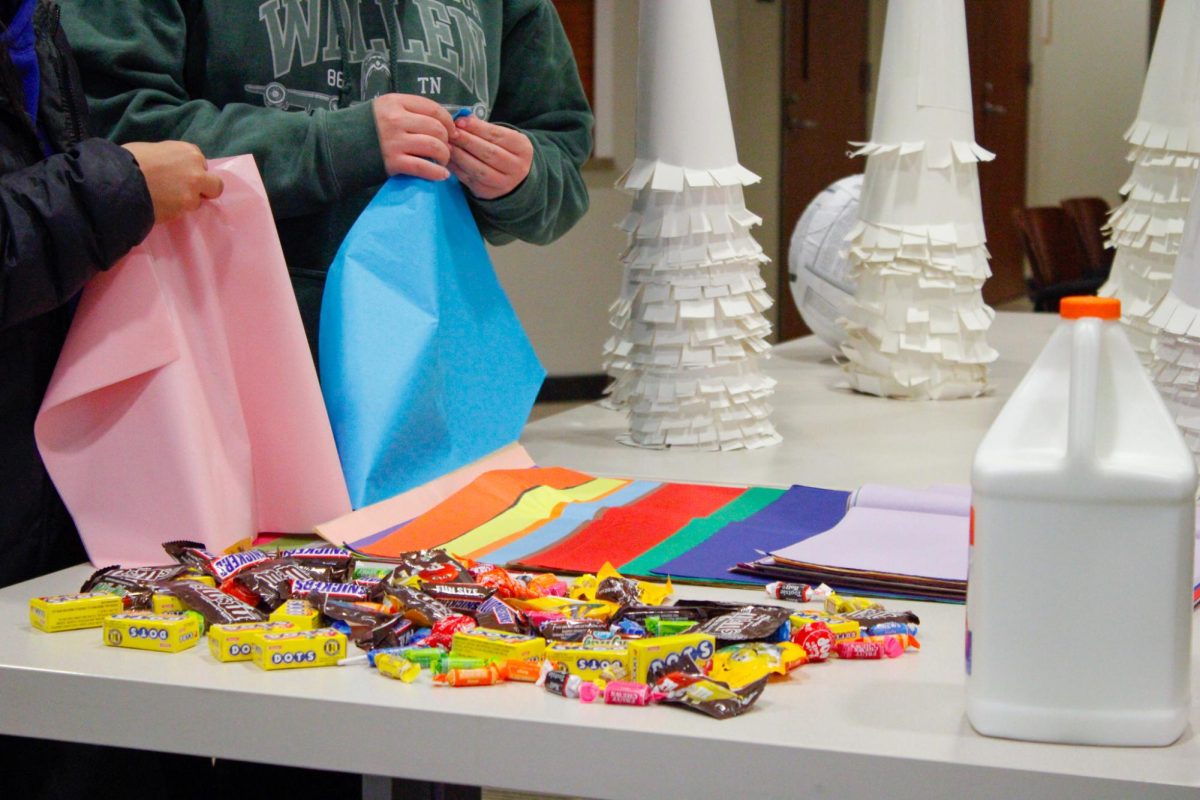Grand Rapids Voice Over, a local recording studio, has recently acquired a new machine that will allow independent artists to put their music on vinyl records.
The record-producing equipment is the latest resource for local artists and musicians who wish to create physical copies of their work.
The machine is a T560 vinyl-cutting lathe that uses stereo input connected with an audio source and a diamond cutting needle, which makes precise grooves into a polycarbonate disc. The loose shavings are also sucked away during this cutting process to keep the record clean and noise free.
This delicate process is both complex and time consuming. To cut just 12 minutes worth of recorded material onto vinyl takes roughly 40 minutes– and that’s just for one record. However, the end result is produces an incredibly valuable product.
“Vinyl is a medium that caters to artists and listeners that like the Hi-Fi sound,” said George Paulin, owner of Grand Rapids Voice Over. “Having a tool like this gives me the opportunity to present the right kind of artists in the Midwest.”
The local artists can sell records to fans, which is a more direct method of financial support compared to the small amount of royalties from Spotify streams that independent artists typically receive.
Vinyl production and sales have surged in recent years. 2022 saw records generate $1.2 billion in revenue– a 17 percent increase from 2021, according to the year-end revenue statistics from the Recording Industry Association of America. To some it may be surprise that college students and young adults have been the driving force behind this surge.
A 2022 year-end music report from Lumanite, an entertainment and insights data company, showed that members of Gen Z spend 19 percent more time with music on a weekly basis compared to the average music listener. The report also reveals that Gen Z spends 10 percent more money than the average listener on music every month.
For many local college students, scouring the numerous record stores available in Grand Rapids has become something of a hobby.
Jake Fries, a student at Grand Valley State University, began collecting music on vinyl in 2016 and has amassed a collection of over 80 records since that time. Fries said he began his collection after the band Panic! at the Disco released the “Death of a Bachelor” live album, which happened to be the first concert he ever attended.
“I think the resurgence of vinyl is because people like to have physical copies of their favorite albums,” Fries said. “Plus it’s fun seeing all the extra cover art and possibly some extra songs on the album.”
With many college students sharing a similar story and sentiment to Fries, there are also others that share the passion for collecting vinyls for entirely different reasons.
Len O’Kelly, Ph. D., Associate Professor and Director of the School of Communications at GVSU, said some people have a “distrust over things they can’t touch.” This attitude, coupled with the murky waters of digital ownership, complicates what should be a straightforward concept of buying and streaming music digitally in 2023.
Nostalgia is another powerful factor that has driven a vinyl renaissance.
“The odd sort of nostalgia that today’s college students have for vinyl is the part that confuses me,” O’Kelly said. “If it’s nostalgia, then they’re nostalgic for something that they never had in the first place.”
O’Kelly recalled a story in which during office hours, a student brought an AC/DC album to play on O’Kelly’s record player because he had never heard it on vinyl. While listening to the album, the student mentioned that this was a way that he had bonded with his father.
O’Kelly said getting along with parents and finding common ground is often difficult for students during college and nostalgia can play a big role in those relationships.
“We always try to find something we have in common and maybe this (vinyl) is the thread that ties generations together in that sense and maybe that’s where the nostalgia comes from,” O’Kelly said.
















